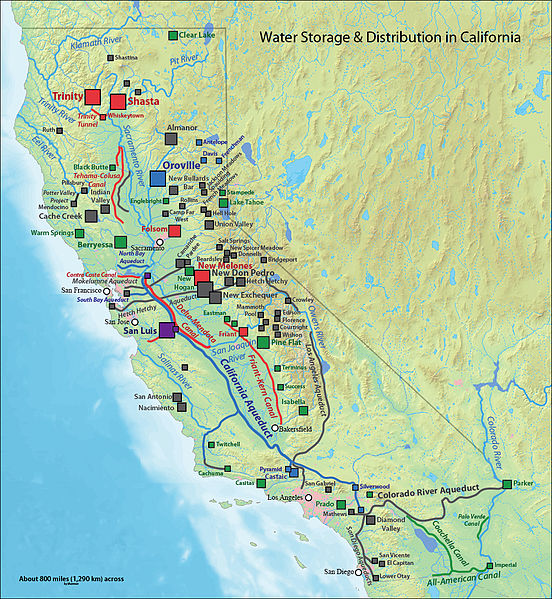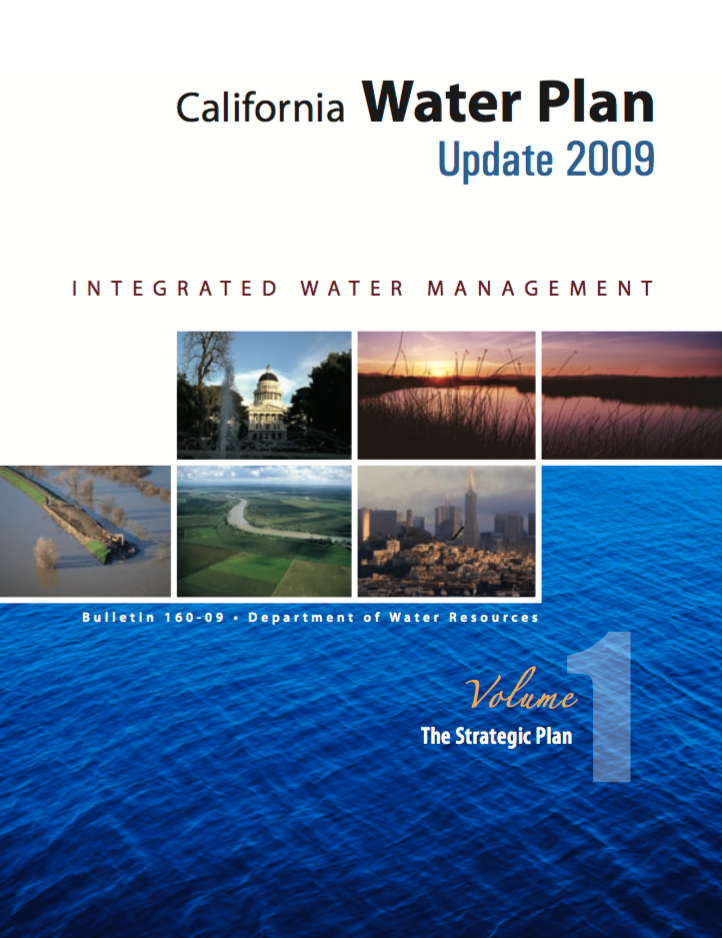California Department of Water Resources Adaptation Strategy

Photo attributed to Shannon1. Incorporated here under the Creative Commons Attribution 3.0 Unported license. No endorsement by licensor implied.
Posted by
Kirsten FeifelProject Summary
Due to growing recognition of climate change impacts on California’s water resources, the California Department of Water Resources (DWR) created climate change adaptation strategies for the state’s water supply. These strategies provide a new approach to managing California’s water supply and other natural resources in a way that is more resilient and robust to the effects of climate change. These strategies led to the development of a Climate Action Plan and Climate Change Program.
Background
Climate change is a concern to many resource managers. In California, the DWR is engaged in improving the state’s ability to adapt to climate change impacts on water management. Aging infrastructure, population growth, and pollution infiltration, coupled with long droughts and impending climate change, threaten the water supply's reliability and quality. Snowmelt from the Sierra Nevada mountain range currently provides an annual average of 15 million acre-feet of water. Historically, the snowpack melted between April and July each year and was captured by the state’s water infrastructure and subsequently stored for use during the drier summer and fall months. Over the past century, the spring snowpack in the Sierra Nevada range has decreased by 10 percent, causing a loss of 1.5 million acre-feet of snowpack storage (one acre-foot of snowpack is enough water for one to two families for one year). By 2050, climate models and the DWR project that the Sierra snowpack will be further reduced by 25 to 40 percent.
Climate change is also projected to cause more frequent and intense droughts and floods. Regions reliant upon surface waters could be acutely affected if runoff becomes more variable. Warmer temperatures could affect water demand; for example, water usage will likely increase to combat increased evapotranspiration rates in agriculture. If snowmelt timing is altered, the likelihood of intense flooding could increase if it coincides with times of heavy precipitation.
Implementation
In 2008, the DWR released Managing an Uncertain Future, which outlined 10 adaptation strategies:
- Provide stable, long-term funding for statewide and integrated regional water management planning;
- Further develop and implement Integrated Regional Water Management (IRWM) planning, which offers a framework to address water-related challenges;
- Increase water use efficiency across the state and across sectors;
- Practice and encourage integrated flood management strategies;
- Protect and restore ecosystems;
- Expand the state’s water storage capacity for both surface water and groundwater, and encourage better management of groundwater resources;
- Work towards a thriving, sustainable Delta by addressing water supply, quality, and ecosystem condition issues;
- Increase monitoring efforts, data analysis, and management to reduce uncertainty;
- Incorporate sea level rise into management strategies; and
- Fund focused on climate change and adaptation research and analysis to reduce uncertainty and facilitate planning for management activities.
To combat the effects of climate change on California’s water resources, the DWR developed these adaptation strategies in coordination with state, regional, and local interests. The DWR recognized that no single project or technique can adequately address all the issues California is facing, thus they are promoting the use of site-specific strategies. Helping water managers plan and invest early on will make the system more resilient to the variety of impacts climate change is expected to cause.
DWR has since developed a Climate Change Program to implement strategies to ensure residents have access to water, flood control, and functioning natural systems. The program is responsible for implementing the three-phase Climate Action Plan for the department. In 2012, DWR adopted Phase 1 of the plan, which focused on how DWR can reduce greenhouse gas emissions. Phase 2 of the plan developed a framework for climate change analysis within DWR projects and programs. Phase 3 of the plan is a climate change vulnerability assessment and adaptation plan for the DWR, released in July 2020.
Outcomes and Conclusions
The DWR is promoting an Integrated Regional Water Management (IRWM) approach through its IRWM Grant Program. The program provides funding to IRWM groups for developing plans and implementing projects. The Grant Program requires IRWM groups to include climate change considerations in future plans. IRWM regional contacts and resources can be found on the DWR website. In addition, mapping tools for water management planning, disadvantaged communities, and economically distressed areas are also available on the DWR website.
The DWR also incorporated several climate change adaptation strategies, including IRWM, water conservation, and integrated flood management, as objectives in the California Water Plan. This plan provides a framework for water managers, legislators, and the public to consider options and make decisions regarding California’s water future. The DWR’s climate change adaptation strategies are also included in the California Climate Adaptation Strategy. Led by the California Natural Resources Agency with participation from numerous state agencies, the California Climate Adaptation Strategy is a multi-sector strategy to help guide California’s efforts in adapting to climate change.
Citation
Feifel, K. (2020). California Department of Water Resources Adaptation Strategy [Case study on a project of the California Department of Water Resources]. Version 2.0. Product of EcoAdapt's State of Adaptation Program. (Last updated July 2020)





